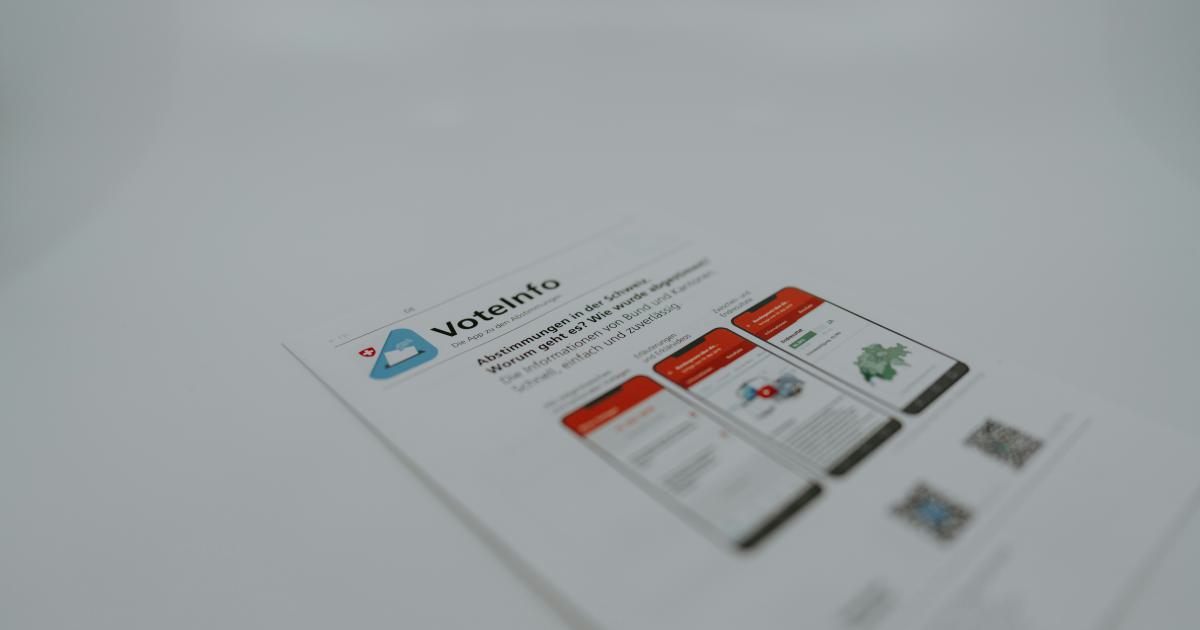How Can Heatmap Analytics Unveil User Behavior?


Understanding Heatmap Analytics
Heatmap analytics have become an increasingly valuable tool for businesses and website owners looking to gain deeper insights into user behavior. A heatmap is a visual representation of data, where different values are represented by colors, creating a heat-like effect that highlights areas of interest, activity, or concentration.
In the context of digital platforms, heatmaps are used to track and analyze user interactions, providing a wealth of information that can be leveraged to optimize user experience, improve website design, and ultimately drive conversions and business growth.
What Is Heatmap Analytics?
Heatmap analytics is the process of collecting, analyzing, and interpreting user interaction data on a digital platform, such as a website or mobile app, and visualizing it using a heatmap. This method allows businesses to understand how users navigate, interact with, and engage with their digital assets, revealing valuable insights that can be used to enhance the overall user experience.
Heatmaps typically display user interactions, such as clicks, taps, scrolling, and mouse movements, using a color-coded scale. Areas with the highest concentration of activity are shown in warmer colors (e.g., red, orange), while areas with lower activity are represented by cooler colors (e.g., blue, green). This visual representation makes it easy to identify patterns, hot spots, and areas of interest that might otherwise be difficult to discern from raw data.

The Benefits of Heatmap Analytics
Implementing heatmap analytics can provide a wide range of benefits for businesses and website owners, including:
Increased Conversion Rates: By understanding how users interact with your website or app, you can identify areas that are performing well and those that need improvement. This allows you to optimize the user experience and make data-driven decisions to drive higher conversion rates.
Improved User Experience: Heatmaps reveal user behavior patterns, helping you identify pain points, areas of confusion, or sections that are not engaging users. This information can be used to enhance the overall user experience, making your digital platform more intuitive and user-friendly.
Informed Design Decisions: Heatmap data can inform your website or app design decisions, guiding you on where to place important calls-to-action, how to structure content and navigation, and which elements to emphasize or de-emphasize based on user interactions.
Competitive Advantage: By analyzing your competitors' heatmaps, you can gain insights into their user behavior and identify areas where you can differentiate your digital platform, offering a more compelling and engaging experience for your target audience.
Data-Driven Optimization: Heatmap analytics provide quantifiable data that can be used to measure the impact of design changes, A/B tests, and other optimization efforts. This allows you to make informed decisions and continuously improve your digital platform based on user behavior.
Types of Heatmaps and Their Applications
Heatmaps come in various forms, each providing unique insights into user behavior. Understanding the different types of heatmaps and their applications can help you choose the right tools and techniques to address your specific business needs.
Click Heatmaps
Click heatmaps are the most common type of heatmap, focusing on tracking and visualizing where users click on a web page or in a mobile app. This information can reveal which elements are most engaging, which calls-to-action are performing well, and which areas of the page are being overlooked or underutilized.

Click heatmaps are particularly useful for:
- Identifying popular or underperforming call-to-action buttons
- Determining the effectiveness of banner ads or promotional elements
- Evaluating the usability and intuitiveness of a website's navigation
Scroll Heatmaps
Scroll heatmaps analyze user scrolling behavior, highlighting the areas of a web page or mobile app that users are most likely to view and engage with. This type of heatmap can help you understand how far users typically scroll, which sections are more visible, and whether your content is being consumed effectively.

Scroll heatmaps are valuable for:
- Determining the optimal length and structure of web pages
- Identifying content that is not being viewed by a significant portion of users
- Evaluating the placement of key information and calls-to-action
Mouse Movement Heatmaps
Mouse movement heatmaps track and visualize where users move their mouse cursors on a web page or in a mobile app. This data can provide insights into user attention, engagement, and hesitation, as mouse movements often correlate with the areas users are focusing on or considering.

Mouse movement heatmaps are useful for:
- Identifying areas of high user attention and interest
- Detecting potential pain points or confusing elements
- Analyzing user hesitation or indecision during the decision-making process
Attention Heatmaps
Attention heatmaps, also known as gaze heatmaps, use eye-tracking technology to monitor and visualize where users are actually looking on a web page or in a mobile app. This type of heatmap provides the most accurate representation of user attention and engagement, as it directly measures visual focus rather than relying on proxy data such as clicks or mouse movements.

Attention heatmaps are particularly valuable for:
- Evaluating the effectiveness of visual hierarchy and layout
- Identifying areas that are overlooked or draw too much attention
- Refining the placement of key information and calls-to-action
Overlay Heatmaps
Overlay heatmaps combine multiple types of user interaction data, such as clicks, scrolls, and mouse movements, into a single visual representation. This allows you to gain a more holistic understanding of user behavior and identify correlations between different interactions.

Overlay heatmaps are useful for:
- Analyzing the relationship between user interactions and engagement
- Identifying areas where user behavior may be inconsistent or unexpected
- Optimizing the overall user experience by addressing various touchpoints
Implementing Heatmap Analytics
To implement heatmap analytics effectively, it's essential to follow a structured approach that ensures the data collected and analyzed is relevant, accurate, and actionable.
Identifying Business Objectives
Before starting your heatmap analytics journey, it's crucial to clearly define your business objectives and the specific questions you want to answer. This will help you determine the most relevant heatmap types to use and ensure that your data collection and analysis efforts are focused on driving meaningful insights and improvements.
Some common business objectives that heatmap analytics can address include:
- Improving conversion rates on key pages or funnels
- Enhancing the user experience and reducing bounce rates
- Optimizing the placement and design of calls-to-action
- Identifying areas of content that are not engaging users
Selecting the Right Heatmap Tools
There are numerous heatmap analytics tools available, each with its own set of features, capabilities, and pricing models. When choosing a heatmap tool, consider factors such as:
- Ease of implementation and integration with your existing technology stack
- Breadth of heatmap types and analysis capabilities
- Reporting and visualization options
- Data privacy and security measures
- Scalability to accommodate your growing business needs
Some popular heatmap analytics tools include Hotjar, Crazy Egg, CrazyEgg, and Piwik PRO. It's important to evaluate each tool's features and determine which one best aligns with your specific requirements.
Collecting and Analyzing Heatmap Data
Once you have identified your business objectives and selected the appropriate heatmap tools, you can begin collecting and analyzing user interaction data. This process typically involves the following steps:
Install Heatmap Tracking Code: Integrate the heatmap analytics tool's tracking code on your website or mobile app to start collecting user interaction data.
Define Tracking Scope: Determine which pages, user journeys, or specific elements you want to track and analyze using heatmaps.
Collect Heatmap Data: Allow the heatmap tool to gather user interaction data over a sufficient period, typically a few weeks to a few months, depending on your website's traffic and the complexity of your analysis.
Analyze Heatmap Visualizations: Carefully examine the heatmap visualizations to identify patterns, hot spots, and areas of concern. Pay attention to elements such as:
- Clicks: Identify popular and underperforming call-to-action buttons, links, and other interactive elements.
- Scrolling: Understand how far users typically scroll and which content sections are most viewed.
- Mouse Movements: Detect areas of high user attention, hesitation, or potential confusion.
- Attention: Evaluate the effectiveness of your visual hierarchy and layout based on where users are focusing their attention.
Cross-Reference with Other Data: Complement your heatmap analysis with other data sources, such as Google Analytics, user surveys, and session recordings, to gain a more comprehensive understanding of user behavior and the factors influencing it.
Derive Actionable Insights: Based on your heatmap analysis and the cross-referencing of additional data, identify specific areas for improvement and develop a clear action plan to optimize the user experience, increase engagement, and drive higher conversion rates.
Implementing and Validating Optimizations
After gathering insights from your heatmap analysis, it's time to implement changes and validate their effectiveness. This process typically involves the following steps:
Prioritize Optimization Opportunities: Based on the insights gathered from your heatmap analysis, identify the most critical areas for improvement and prioritize them based on their potential impact on your business objectives.
Develop and Implement Optimizations: Translate your insights into actionable optimizations, such as redesigning key user interface elements, restructuring content, or adjusting the placement of calls-to-action.
Conduct A/B Testing: Whenever possible, use A/B testing to validate the impact of your optimizations before fully implementing them. This helps ensure that the changes you make are indeed driving the desired outcomes.
Monitor and Iterate: Continuously monitor the performance of your optimized pages or user journeys using heatmap analytics and other data sources. Regularly review the results, identify additional areas for improvement, and iterate on your optimization efforts to ensure ongoing progress.
Heatmap Analytics in Action: Real-World Examples
To better illustrate the power of heatmap analytics, let's explore a few real-world examples of how businesses have used this valuable tool to unlock insights and drive tangible improvements.
Example 1: Optimizing an E-commerce Product Page
A leading e-commerce company noticed that their product pages were not converting as well as expected. They decided to conduct a heatmap analysis to understand user behavior on these pages.
The click heatmap revealed that the "Add to Cart" button was not receiving as many clicks as expected, and the mouse movement heatmap showed that users were hesitating and moving their cursors around the page, seemingly unsure of where to take action.
By analyzing the heatmap data, the company identified several areas for optimization:
- Redesigning the "Add to Cart" button to make it more prominent and visually appealing
- Rearranging the product information and imagery to create a more compelling and intuitive layout
- Introducing social proof elements, such as customer reviews, to build trust and overcome hesitation
After implementing these changes and validating their impact through A/B testing, the company saw a significant increase in product page conversion rates, directly contributing to their overall e-commerce revenue growth.

Example 2: Improving a SaaS Onboarding Experience
A SaaS (Software as a Service) company noticed that many users were signing up for their product but not fully engaging with the onboarding process. They decided to use heatmap analytics to identify the pain points and optimize the onboarding experience.
The scroll heatmap revealed that a large percentage of users were not scrolling past the initial onboarding steps, missing critical information and features that could help them understand the product's value.
Additionally, the click heatmap showed that users were not interacting with certain onboarding elements, such as the "Get Started" button, indicating a lack of engagement or confusion.
By analyzing the heatmap data, the company made the following optimizations:
- Restructuring the onboarding flow to make it more concise and visually appealing
- Introducing progress indicators and visual cues to guide users through the onboarding steps
- Optimizing the placement and design of the "Get Started" button to make it more prominent and inviting
After implementing these changes, the company saw a significant increase in the number of users completing the onboarding process and actively engaging with the SaaS platform, leading to higher retention rates and a stronger overall user experience.

Example 3: Improving a News Website's Content Engagement
A leading news website noticed that certain articles were not performing as well as expected in terms of user engagement, with high bounce rates and low time spent on the pages.
To understand the issue, the website's team conducted a heatmap analysis, focusing on both click and scroll heatmaps.
The click heatmap revealed that users were not interacting with the article's calls-to-action, such as "Read More" or "Share This Article," indicating a lack of engagement.
The scroll heatmap, on the other hand, showed that users were not scrolling past the initial section of the articles, missing out on important content and information.
Based on these insights, the news website made the following optimizations:
- Redesigning the article layout to make the calls-to-action more prominent and visually appealing
- Introducing visual cues and content previews to encourage users to scroll further down the page
- Optimizing the placement and structure of the article content to better capture and maintain user attention
After implementing these changes and validating their impact through A/B testing, the news website saw a significant increase in user engagement, with higher click-through rates on calls-to-action, increased time spent on articles, and lower bounce rates – all of which contributed to improved content consumption and audience retention.

Conclusion
Heatmap analytics is a powerful tool that can provide invaluable insights into user behavior, enabling businesses and website owners to make data-driven decisions and optimize their digital platforms for enhanced user experience and increased conversions.
By understanding the different types of heatmaps and their applications, and by following a structured approach to implementation and optimization, organizations can leverage heatmap analytics to:
- Identify areas of high and low user engagement
- Optimize the placement and design of calls-to-action and other key elements
- Enhance content structure and layout to improve consumption and retention
- Uncover potential pain points and areas of confusion in the user journey
- Make informed, data-driven decisions to continuously improve the user experience
As the digital landscape continues to evolve, heatmap analytics will play an increasingly crucial role in helping businesses stay ahead of the curve, meet the changing needs and expectations of their target audience, and ultimately drive sustainable growth and success.